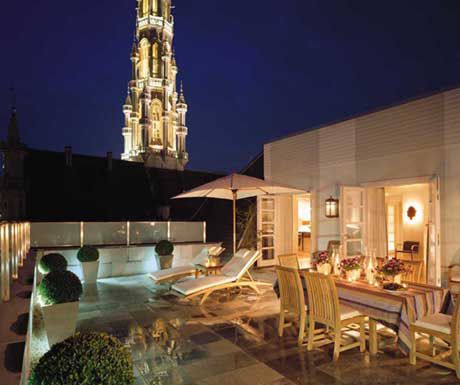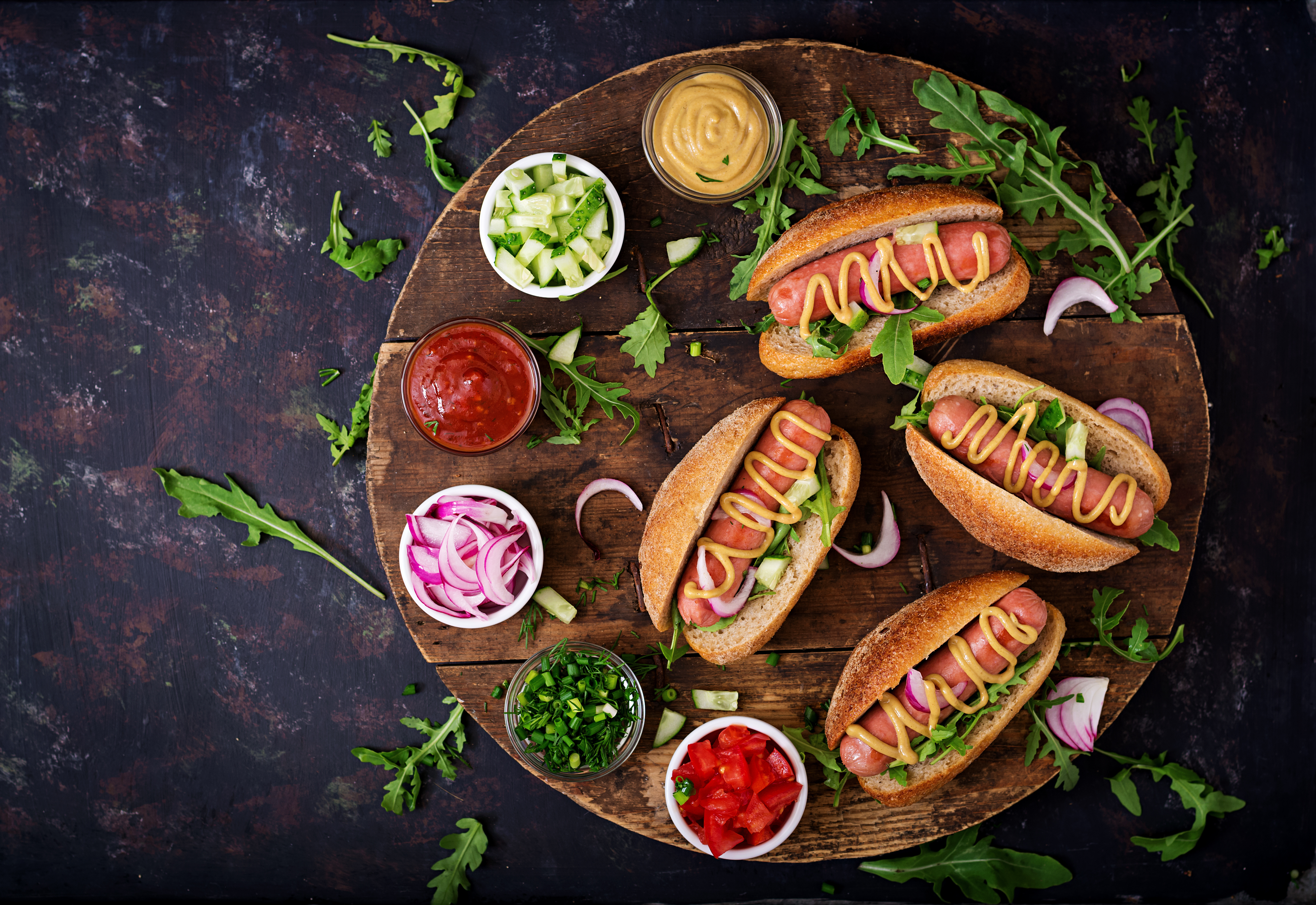The best family ski hotels

When we go traveling with our families we want to know that all our desires and needs are catered for; from making sure the hotel has all the necessary facilities, to ski areas with slopes to suit everyone’s level of ability. Here is a list of five fantastic hotels perfect for skiing families.
Club Med Panorama, Les Arcs
New for the 18/19 season and located right on the slopes in the very heart of the wonderful resort of Les Arcs, the Club Med Panorama is the new four trident flagship hotel perfect for families. As an all-inclusive holiday, the Club Med Panorama will cater to your every need, including childcare for younger children and ski tuition for those who need it. The Club Med offers all-day dining as well so you won’t ever have to worry about rushing your family back to the hotel to get lunch. The hotel is tailored for adults too, with an amazing terrace bar, brilliant spa facilities and the amazing Paradiski ski area with over 400km of slopes, teeming with beautiful mountain restaurants and bars.
Hotel Monzabon, Lech
Set in the welcoming resort of Lech and part of the renowned Arlberg ski area, Hotel Monzabon is a popular family getaway due to its location and facilities. The hotel is situated at the foot of the slopes right by one of the main lifts making it an ideal ski-in ski-out residence for families. The ski area is also extremely versatile; beginners won’t have to travel far to get to the nursery slopes and advanced skiers will be able to enjoy the 300km of slopes the Arlberg has to offer. The hotel also has wonderful facilities, with its own indoor swimming pool and even an ice rink. For dining options, the hotel Monzabon caters for adults and children alike by offering great cuisine and a children’s menu with plenty of variety.

Ferienart Resort and Spa, Saas-Fee
The Ferienart Resort and Spa Hotel is a five-star luxury hotel and the crown jewel in the beautiful resort of Saas-Fee. The hotel has plenty of luxurious facilities including an out-of-this-world wellness area and no less than five restaurants, each offering different cuisine, so you won’t ever get tired of dining on the same gourmet dish twice. Children are also well catered for here, there are dedicated childcare and babysitting available from 9am to 9:30pm. Children will also be ecstatic to find their own enormous playroom and there are a large variety of activities including discos, toboggan runs and mini-baking classes throughout the day.

Hotel Alpina, Obergurgl
The Hotel Alpina is nestled in the charming village of Obergurgl in the Ötztal Alps in Tyrol. This stylish Hotel is consistently popular with families due to its ability to cater to everyone. The hotel is only a few meters from the slopes and the main ski school meeting area making it easy for those who need tuition to get there. The hotel also has free dedicated childcare for younger children as well as its own huge playroom; filled with many activities and indoor games for kids. The hotel is perfect for adults too, there is a stylish cocktail bar with a magnificent open fireplace as well as an amazing spa; with a large indoor pool, saunas and hot-tubs offering panoramic views of the beautiful Ötztal Alps.

The Gant, Aspen Snowmass
The Gant Hotel is nestled at the foot of Aspen Mountain and is a luxurious American retreat perfect for families looking to ski outside of Europe. The Gant Hotel is located conveniently just a few minutes from the slopes meaning you won’t have to trek to the nearest lift. The accommodation is also in a ‘condo-style’ with a variety of sizes to suit large and small families; the rooms are furnished beautifully with a full kitchen, large living areas and big wood-burners on cosy terraces. The Gant also offers superb services and amenities such as grocery delivery, daily housekeeping, complimentary ‘Gant Vans’ shuttle buses and childcare.

By Craig Burton from www.skisolutions.com
Best places to enjoy afternoon tea in London

February is upon us and the days are still short and dull, so what better way to brighten up the gradually lengthening afternoons with a little bit of indulgence. Here are our top four places to enjoy an afternoon tea in England’s capital aaccording to blogger Stuart Leckie:
Claridge’s Classic Afternoon Tea, Mayfair
Price: £50 per person
What you get: A choice of teas, finger sandwiches, scones served with Marco Polo jelly and Cornish Clotted cream, and a selection of sweet pastries.
If you’ve got children with you, they can have their own version of the afternoon tea, which is a nice touch. You can’t fault the staff here; there must be at least two for every diner and they are all admirably keen to tell you about their favourite blend of tea – there’s a whole booklet of choices. There is usually some beautiful musical backing, often from both a pianist and a cellist. Diners are also gifted with a little tin of Claridge’s blend tea to take home.
Flemings Chocoholic Afternoon Tea, Mayfair
Price: £39 per person
What you get: A choice of chocolate & cream tea, chocolate tea or caramel tea, finger sandwiches, chocolate chip scones, petit fours
Set in a boudoir-like basement, afternoon tea here feels thoroughly naughty. It’s trendy and edgy – quite different to some of the most famous and traditional afternoon tea spots. The range of petit fours and pastries change on a regular basis and are always deliciously sticky. Past concoctions have included chocolate scones, churros with dipping sauce, and classic chocolate eclairs. Go hungry and with a very sweet tooth!
Price: £39.50 per person
What you get: A healthy selection of fruit and herbal teas, savoury snacks, cakes, fruit sorbet and fruit skewers with yoghurt and honey.
A very different take on the classic afternoon tea, Tea-Tox is an ideal choice for a post-Christmas treat. Special without being indulgent, the chefs have created a menu that’s low in fat and sugar, including items such as poached salmon and dill crème fraiche on dark rye bread, and flourless and sugar-free chocolate cake. If you choose to add a glass of champagne, even that is low in calories!
Price: £39 per person
What you get: Selection of loose leaf teas, savoury snacks, finger sandwiches, cakes and fancies.
Calling all fashionistas! Whatever’s in season in the fashion world, you’ll find it here. The menu is inspired by haute couture and changes every six months to reflect the latest collections, with a little added tongue-in-cheek. The menu includes such delights as Emporio Armani violet cassis mousse, Oscar de la Renta orange bavarois, and a Burberry Prosum heart patterned ginger biscuit trench with caramel icing. Expect your snacks to appear in the shape of shoes and items of clothing.
Travelers losing interest in home-sharing and Google gaining ground as travel resource
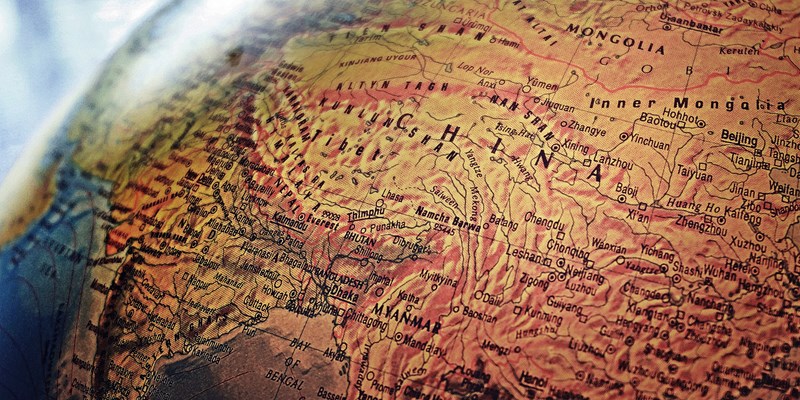
For all the chatter of Airbnb stealing scene time away from hotels, traveler interest in home-sharing seems to be waning.
According to MMGY Global’s Portrait of American Travelers study, which surveyed nearly 3,000 US adults that have taken at least one trip over the past 12 months, just 33% of respondents are interested in sharing economy accommodations, down from 41% in 2017 and 37% in 2016.
Comparatively, 75% express interest in large branded hotels, while 66% are interested in suite-based properties and 61% want limited-service branded hotels.
Millennials are the age bracket most interested in home-sharing at 46%, followed by Generation X travelers at 31%, baby boomers at 22% and mature travelers at just 14%.
Some 20% of respondents say they used sharing economy accommodations at least once during the past 12 months, down from 22% in 2017, with 14% using Airbnb and 5% using VRBO or HomeAway.
Interestingly, though interest and usage are down, 27% of travelers still intend to book home shares in the future, up from 19% in 2017 and 18% in 2016. Millennials are the most likely to seek out alternative accommodations in the coming months (42%), followed by Gen Xers (22%).
According to the survey, the top three reasons travelers dislike home-sharing are because they don’t want to share vacation accommodations with strangers (71%), they prefer the locations of hotels (66%) and they don’t believe the quality of home shares matches that of hotels (50%).
It starts with Google
The report also finds that to search for travel information and prices, travelers turn to Google the most at 41%, up from 40% in 2017 and 32% in 2016.
Google is the go-to search starting point across all generations except the mature audience, who prefer researching via specific airline brand websites at 36%. After Google, 37% of millennials and Gen Xers turn to Expedia, and 36% of baby boomers visit TripAdvisor.
Overall, fewer travelers are using Expedia and TripAdvisor in 2018 over 2017, with the former dipping a percentage point to 36% compared to last year and the latter dropping to 35% from 37% in 2017.
Just 20% of travelers are looking to Kayak and Priceline, and only 14% go to Booking.com.
Additionally, about 60% of travelers say they visit online travel agencies regularly to scout travel information and prices, down from 62% in 2017.
For those who obtain travel information via an OTA, 41% ultimately make reservations through the OTA platform – the same percentage as in 2017 – while 16% book direct through the travel provider’s website and 15% call the service provider directly.
Of the 40% of travelers who say they conduct research on a travel service provider’s website, 47% end up booking direct, up from 43% in 2017, followed by 17% who call the service provider to make reservations and 14% who book via OTA.
Just 8% of travelers have booked a service directly through one of Google’s products such as Flights or Hotel Finder in the past 12 months, though 59% would consider booking all components of a vacation through the search giant, up from 52% in 2017.
Google comes in second to Expedia for one-stop shops travelers consider, though preference for Expedia has dipped to 64% from 67% in 2017. TripAdvisor, too, has lost some status, with 54% of travelers considering the site, down from 61% in 2017.
Despite no formal travel search or booking offerings, Amazon is also high on places travelers wish to book all aspects of their vacations, with 41% saying they would consider the platform, up from 36% in 2017.
Going mobile
According to the survey, travelers are downloading fewer travel apps, with 29% saying they have downloaded one over the past 12 months compared to 30% in 2017 and 35% in 2016.
Airline apps are the most popular at 59%, followed by hotel apps (45%, down from 49% in 2017) and OTA apps (up to 34% over 32% last year).
Bookings conducted via apps are also down, with 18% of travelers booking on mobile over the past 12 months compared to 19% in 2017.
Accommodations are the most common services booked (61%), followed by flights (48%) and rental cars (27%).
More travelers are turning to their phones to look for activities including finding nearby restaurants and shops (60%, up from 56% in 2017), looking at reviews and ratings of hotels and restaurants (43%, up from 37% last year) and comparing hotel and airfare rates (29%, up from 21% in 2017).
About 21% of travelers prefer to conduct travel research via smartphone, up from 17% last year, though 48% prefer using a tablet, down from 51% in 2017; 31% of travelers say the prefer smartphones and tablets equally.
The same trends apply to making travel reservations, with smartphone preference on the rise at 23% over 18% in 2017 and tablet usage declining at 48% compared to 51% last year.
New technologies
Although 23% of survey respondents say they’ve used a smart speaker such as Amazon Echo or Google Home over the past 12 months, only 6% have used the devices to research or book travel.
Just 8% of travelers have used virtual reality such as GoPro VR or Samsung VR, and of those, only 3% have used VR to search for or book travel. Smart assistants such as chatbots are also used infrequently, with 6% saying they’ve used one during the past 12 months and only 3% saying they’ve booked via the technology.
Voice search has been used by 10% of travelers for vacation planning and booking, and of those, 67% have used voice search on their smartphone, with 37% using voice search on their laptop and 36% via tablet.
Not surprisingly, millennials lead the charge when it comes to experimenting with new technologies, with 12% saying they’ve used a smart speaker for travel-related searches in the past 12 months compared to Gen Xers at 5% and baby boomers at 2%.
Baby boomers that use voice search, however, are more likely to do so on their phones at 75% compared to 63% of millennials and 67% of those in Gen X.
Of the new technologies, augmented reality such as WikiTude or Yelp Monacle is the least-used at 2%, with just 1% of travelers using AR to research or book travel in the past 12 months.
Enjoy luxury shopping and more in London
Beautiful London is the perfect getaway for a luxury vacation. A vibrant city packed with gorgeous architecture, award-winning bars and restaurants and world-famous attractions. If it’s glamour you’re looking for, then this is the place to be. Here’s our hit list of the Big Smoke’s most luxurious destinations.
Harrods, Knightsbridge
The world famous department store is one of the most expensive places to shop in London but is one of the most luxurious, featuring all of the UK’s top designer brands as well as those from overseas. The store is packed with history too – in 1898, England’s first escalator was installed here and brave customers received brandy at the top.
Almost anything can be purchased here – and back in the day, absolutely anything could be. In 1969, two men famously bought a lion cub from Harrods, later returning it to the wilds of Kenya. If you’re here in the lead-up to the festive period, the whole building is lit by 11,000 bulbs, turning the whole of Harrods into a huge, shimmering Christmas decoration.
Harvey Nichols, Knightsbridge
Once you’re finished in Harrods, stop by Harvey Nichols just up the road for more designer brands and departments full of luxury goods. On the fifth floor, you’ll find a range of fine cafes and restaurants to renew your energy for shopping.
The bright Champagne Bar has a range of vintages and a tempting botanical themed cocktail list. Book in for a modern take on afternoon tea in the restaurant – the theme changes regularly but always features deliciously contemporary cakes, biscuits, desserts and sandwiches.
Get an Uber taxi
Forget the standard London black cab – there’s a new kid in town. Uber taxis will pick you up from wherever you are through their handy iPhone or Android app and take you straight to your destination. Priced the same as a standard black cab, you can choose to travel in a high-end sedan or SUV. The interiors have got a lot more to show off and are smartly decked out with real leather seats, climate control, passenger controlled entertainment, iPads and iPhones – it’s like having your own personal chauffeur.
Old Bond Street boutiques
Jump in an Uber Taxi from Knightsbridge to Old Bond Street for some more serious shopping at the capital’s best designer boutiques to find some very unique and unusual purchases including clothing and jewellery. The buildings and store fronts here are amazing. Tiffany’s is on this street, along with De Beers, Cartier, Alexander McQueen, Mulberry and many others.
London Eye, Westminster
Enjoy the sights of London during the day or at night in style with a private capsule. Guests receive priority boarding, seating for up to 25 guests. After a 30 minute-ride on the London Eye, you’ll also get entry to the 4D experience. Book a capsule just for two with champagne and truffles for a really romantic ride.
Ingredients for a great gourmet weekend in Brussels

Belgium is a one-of-a-kind country in the heart of the old world. It’s a place where different cultures and influences meet, a true European crossroads where a cosmopolitan cultural background contrasts starkly with the beautiful countryside and small-town settings that dominate the landscape. The country’s capital, Brussels, is considered an important social and political haven, as this is where the European Union has its main administrative core. The main core of the city, known as the Grand-Place, was initially nothing but a swampy area. Eventually, the swamps were transformed into a local market, which because of its designation as a famous UNESCO World Heritage Site, not to mention it being Brussels’s most recognizable attraction, is visited by thousands of tourists on a daily basis.
As a favorite destination for gourmet weekenders, it is not surprising that Brussels is home to an extremely exciting foodie scene. Food excellence and fine cuisine from all over the world converge beautifully with the local tradition. Belgium is particularly well known for its dairy products (high-quality milk, cheese, cream…) as well as for its masterfully crafted chocolate, a world-famous staple of Belgian cuisine. Here’s a list featuring 6 tips that will help you make the best of your Gourmet Weekend experience!
1. Enjoy your stay at Amigo by Rocco Forte
Gourmet experience in Brussels would not be complete without luxury accommodation! Amigo is one of the city’s most well-known high-end accommodations: a true local staple of style and comfort. This is not just fancy accommodation, but it’s got lots of history too, as it is located within a building that dates back to 1522. Originally used as a prison, the hotel owes its peculiar name (“Amigo” is Spanish for “friend”) to a misunderstanding that occurred when the Spanish rulers at the time mistook the local term for prison as their own word for friend. The name and the irony stuck and remain a fun anecdote to this day. With its interesting history, luxury suites, and high-quality modern comforts, the Amigo is the ultimate place to spend your weekend in when in Brussels.
2. Have dinner at the Michelin-starred restaurant BonBon

BonBon is a Michelin-starred restaurant (it has earned 2 stars) boasting a growing reputation for the chefs’ creative and experimental dishes. The philosophy of this restaurant is fairly simple, yet extremely forward-thinking: it combines timeless core values such as freshness of ingredients, quality produce, and classic craftsmanship with research, innovation, and creative ideas that truly make headlines within the fine-dining world. If you are looking for great food that will surprise and astonish you, look no further than BonBon.
3. Have lunch at Ogemblik, a traditional restaurant in Gallerie de la Reine

Located in the Gallerie St Hubert, one of the most beautiful XIX-century galleries in Europe, this restaurant is one of the secret gourmet locations in Brussels for those who love tradition in cooking. Indeed, Belgium’s traditional dining is sadly often underappreciated. If you thought that local cuisine was nothing to write home about, a lunch at Ogemblik might help you rethink that. Simple yet heart-warming recipes will hit the spot and convert you to the understated goodness of local traditional cuisine.
4. Get lost in a huge selection of delicious chocolate pralines at Mary
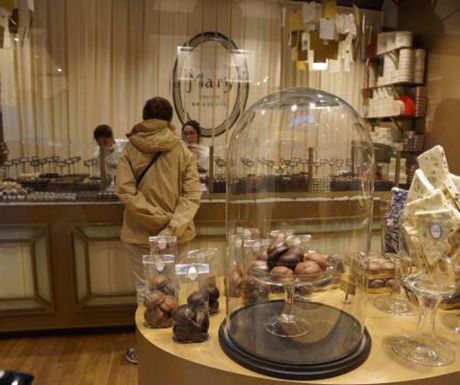
Belgium is practically a synonym for chocolate. Along with Switzerland, the country is known all over the world for its long-standing chocolate-making traditions and creativity. Mary, located within the heart of Brussels, is likely one of Europe’s foremost artisanal chocolate shops. Mary’s pralines are absolutely legendary, and people from all over the world consistently rates them as some of the best chocolate they’ve ever tasted, including former USA president George Bush, just to mention one! If you are fond of chocolate, this is an experience that you would not want to miss for the world!
5. Taste traditionally-baked cakes at Dandoy

If all the great chocolate that you can find in Brussels wasn’t enough to satisfy your sweet tooth, head over to Dandoy, one of the city’s most famous bakeries. They’re particularly well-known for their hand-made Belgian cakes, such as their wonderful speculoos. The variety is astonishing and everything is made with quality ingredients and stunning decorations. Some recipes are from the Middle Ages and always made according to tradition with only high-quality ingredients. You will definitely find the perfect cake to suit your mood, style, and preferences! It’s a true Belgian classic that caters to tourists as well as locals looking for the best slice of pie in town.
6. Discover Rob, the best luxury grocery shop in Belgium

Rob’s is one of Europe’s most famous luxury grocery shops. Its reputation is extremely well-deserved, given the fact that the shop offers a selection of products from all Belgium that extends far over the local boundaries in order to include some of the world’s finest food products, drinks, and more! Get lost among an incredible selection or experience a meal directly from the store’s in-house café and restaurant facility if you are looking for a quick and excellent bite.
By Olivier Templar-James
Things to do for architecture and art lovers in Brussels

Brussels is not a very large city but it sure has its appeal. It is the capital of the European Union and boasts of a distinctive charm that makes it a truly intriguing location. When one thinks of fun and interesting things to do in Brussels, many options readily cross the mind; from the stunning architecture, amazing art scene, incredible dishes, to the endless shopping avenues. There is something for everyone.
Yes, Brussels is quite small when compared to some of the major tourist destinations in the world, but the advantage of this is that all the major tourist destinations can be enjoyed in one trip! Another great thing about Brussels is that every tourist attraction you visit is more than what meets the eye; there is a lot of rich history and hidden allures in Brussels. In addition, if you are a lover of art and an architecture enthusiast, you have to keep an open mind and prepare to be fascinated!
If you are visiting Brussels for the first time or you are visiting for the umpteenth time, here are 6 things that you must endeavor to do while exploring the art and architecture in this intriguing city.
1. Stay at the luxury Hotel Amigo among pieces of art
Hotel Amigo is situated right at the point of convergence of every facet of Brussels’s culture. It is located a few meters from the Grand Place, the famous Ilot Sacré area right in the middle of a pedestrian district that is surrounded by a wide variety of restaurants, boutiques, shops, and art galleries. It is also located in the financial district of Brussels. The location is ideal for anyone who wishes to explore as a tourist or someone in the city for business.
The Hotel Amigo is usually among the top choices for pleasure or business and the atmosphere is lively and suits any purpose. The building itself which is very impressive boasts of the classic Spanish renaissance style and it is a perfect balance of modern and traditional designs.
The hotel has 173 rooms and the rooms all have the characteristic Belgian accent in addition to the incredible artworks on display. The hotel is decorated with Magritte and Tintin prints and illustrations, as well as Broodthaers prints. An interesting fact is that the Magritte Lithography and “clin d’oeil to Tintin” are different in every room; making it a haven for art lovers. In addition to the Flemish vintage furnishing and the Brussels flagstones that dot the vicinity, the picturesque view from the private terrace is simply amazing. The hotel also has good restaurants that serve delicious food, especially the Italian restaurant, Ristorante Bocconi.
The most striking thing about the Hotel Amigo is the way the architectural design and the artwork come together to create a building that personifies understated elegance.
2. Visit the famous Magritte Museum

The Musée Magritte Museum named after the famous Belgian Surrealist artist, Rene Magritte is situated in the Place Royale. Since being established in 2007, the museum has had over 2 million art enthusiasts cross its threshold to admire and contemplate the widest Magritte art collection in the world. The museum currently has over 200 artworks that cut across all disciplines including gouaches, sculptures, oils on canvas, drawings, vintage photographs, advertising posters, painted objects, and musical scores; all works of the artist.
The museum presents the Magritte works in an order that makes you feel connected to the artist and also gives you an understanding of the artworks. The collection begins with “The Secret Player”, 1927 and proceeds through other paintings done in the artist’s life. Every painting shows the evolution of the artist through his years and the collection ends with “The Dominion of Light”, 1954 which is perhaps the most mysterious of the artist’s paintings. The effect the order of the paintings has on the admirer is that it either leaves you pondering how the mind of Magritte worked or you just develop an intense admiration for his imagination.
The museum has a lending policy that allows private collectors to loan their Magritte works to the museum. Also, the museum has provided works that have been exhibited in 19 international exhibitions in places such as Tokyo, New York, and will contribute to Frankfurt and Paris in the near future. If you are a lover of art and have heard of Magritte, this is the best place to have a full view of the art and the artist. However, if you have not heard of him, where else would you want to be introduced to such an incredible collection?
3. Visit Villa Empain – a masterpiece of Art Deco

The Villa Empain is one of the most exquisite Art Deco masterpieces in Brussels. It was built in 1930 as a private mansion but it became open to the public in 2010. The building has literally been through a lot; with the years of little care and the intense renovations that began in 2008. Currently, the building is in the care of the Boghossian Foundation and its future is very bright indeed. The foundation organizes contemporary art exhibitions and also works on the dialogue on Occident and Orient.
The current exhibition is the Décor, an exhibition event that will run from 8 September 2016 to 29 January 2017. The décor exhibition will involve several artists who were selected because of their works in modern art and decorative art. The exhibition which will be all about showcasing the decorative contemporary artworks will also serve as a further facelift for the Villa Explain. Some of the artists include Milena Muzquiz, Daniel Buren, Latifa Echakhch, Carl Andre, Milena Muzquiz, and others.
4. Visit the Musée Horta – a masterpiece of Art Nouveau
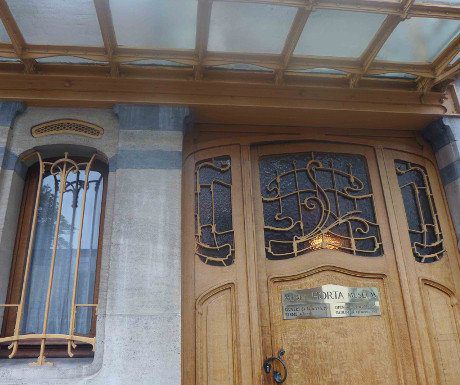
Brussels is the world center of Art Nouveau and this can be seen in a whole of buildings in the city. As a matter of fact, there are tours organized to explore the notable art nouveau works in the city. Some of the creative architects whose works can be explored include Paul Hankar, Victor Horta, and others.
The Horta Museum remains one of the best-known repositories of art nouveau. It used to be the home of Victor Horta and it is one of the best displays of subway tile and stained glass, as well as other materials like wrought iron and pale wood, carefully combined to provide an illusion of the building being bathed in gold on sunny afternoons. There are also several art nouveau paintings on exhibition, to provide inspiration for aspiring architects and artists.
The other buildings usually included in the Art Nouveau tours are the phenomenal Hanon house which is dedicated to photography exhibitions, the Solvay Library, the Cauchie house, the Autrique House, among many others. These buildings are intricately designed and their beauty is made even more obvious by the creative blend of mosaic, wall paintings, stained glass, tiles, and every conceivable material used in building them. The Art Nouveau works can also be viewed at the Royal art Nouveau museum. Several other Art nouveau buildings can be used to host events and occasions.
5. Be surprised by the international contemporary exhibition at La Patinoire Royale
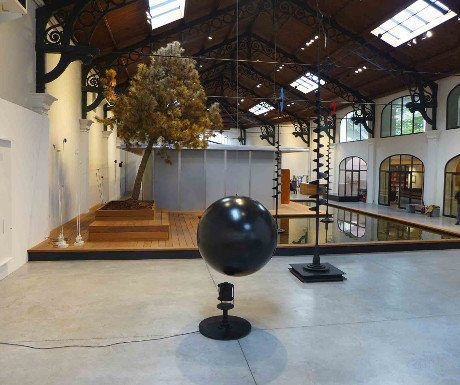
La Patinoire Royale is a 19th-century architectural masterpiece that used to be a roller skating rink before it was converted into an exhibition space. Currently, the building hosts international exhibitions from world acclaimed artists and you will be surprised at how well it all comes together. The private gallery will be exhibiting the works of the famous French designer Jean Prouvé and Vasilis Takis. Therefore, if you know you love art and you are on a visit to Brussels, you should include a visit to this gallery in your itinerary.
6. Explore the MIMA Museum
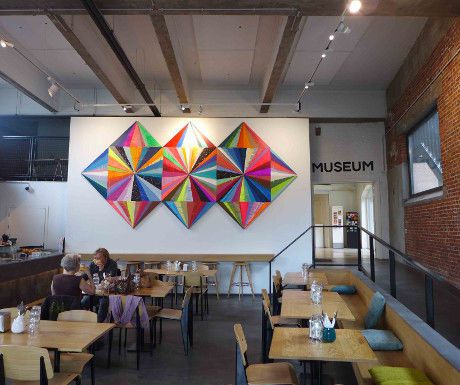
The MIMA -Millennium Iconoclast Museum of Art – is not your usual museum simply because it showcases street art and contemporary art that is painted onto the walls of the building even if some are in frames. Some of the works are permanent while others are painted for the sole purpose of exhibitions. The MIMA is a bold attempt to present a different view of street art and it is working quite well because a visit to the museum will awaken a new sense of appreciation for modern art in any art lover’s mind. Some of the works being exhibited include Faile, Swoon, Maya Hayyuk, Barry McGee, Escif, Mobstr, and many others.
By Olivier Templar-James
Winter golfing on the island of Mallorca
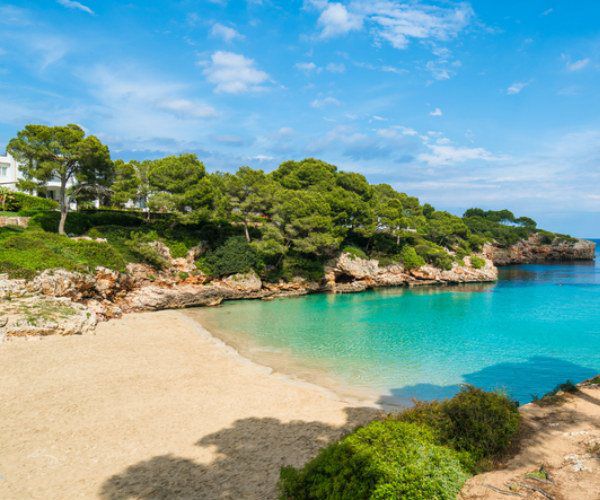
Delicately scented pink and white flowers will transform Mallorca’s five million almond trees in the coming weeks, but the Spanish island’s abundant almond blossom is not the only attraction for visitors at this time of year.
For sun-starved Northern Europeans, Mallorca’s golf courses (21 of which are open to visiting players) are also a draw, blogs Jan Edwards.
If you’re tired of battling the elements or gazing out at sodden greens from the comfort of the 19th hole, a winter golfing break is a good opportunity to maintain your handicap and enjoy a milder Mediterranean climate.
Mallorca’s best golfing deals combine hotel accommodation with green fees for one or more local courses. The closer the course, the more time you’ll have for driving from a tee, rather than in a hire car.
You can play some of the finest courses in Mallorca’s southwest on a golf package at the following hotels this winter:
The 4-star Hotel Golf Santa Ponsa has a ‘super package’ comprising seven nights’ accommodation, breakfast, four days’ car rental and five 18-hole green fees (three for the Golf Santa Ponsa course, one for Golf Andratx, one for Royal Bendinat Golf). Rates per person (sharing a double room) start at 810€.
Four-star Lindner Golf & Wellness Resort near Portals Nous, is located on the Royal Bendinat course. The hotel’s ‘Golf, Sleep & Eat’ package (from 111.90€ per person sharing a double room) includes green fees to play at a choice of local courses. They also offer a package to play championship course Son Gual, designed by Thomas Himmel and opened in 2007 at a cost of thirty million euros. Golf World magazine ranked it 44th in their 2014 ‘Top 100 Courses in Continental Europe’. The Lindner’s three-night, half-board package, including three Son Gual green fees, starts at 440€ per person (sharing a double room). The course is around a 30-minute drive away, so transport is necessary.
Guests at the 5-star Sheraton Mallorca Arabella Golf Hotel have 63 holes almost on their doorstep, with unrestricted play at any of the four neighbouring courses: Son Vida (Mallorca’s oldest), Son Quint, Son Quint Executive (9-hole) and Son Muntaner. Hotel room rates include green fees, use of driving range and practice facilities, preferential tee-off times and complimentary shuttle transfers.
The 93-room hotel – which re-opened in September 2013 after a refurbishment costing 13 million euros – is on the exclusive Son Vida estate, just outside island capital Palma de Mallorca. Facilities include two restaurants, Sheraton’s first Shine Spa in Europe, and spacious lobby bar and lounge area where you can swap golfing tales with like-minded guests. Rates per double room per night (for two people) are from 400€, including breakfast, tax, and as much golf as you can swing a club at. Just be sure to find time to see Mallorca’s emblematic almond blossom[/vc_column_text][/vc_column][/vc_row]
Crystal Cruises Decks the Halls for the Holidays
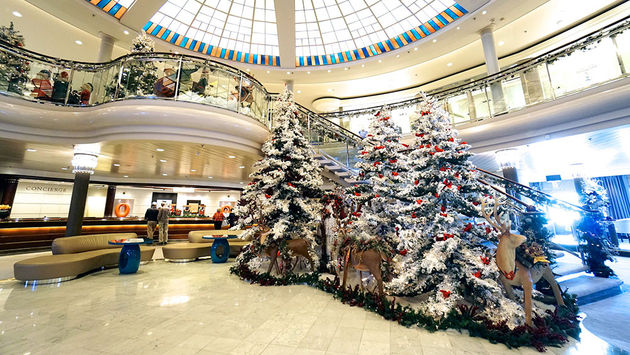
Christmas decorations, Crystal Symphony, Crystal Cruises, Photo by Jason Leppert
When it comes to the holidays, Crystal Cruises does it right, and on our Thanksgiving cruise aboard the Crystal Symphony, we got a taste for turkey as well as Christmas.
For Thanksgiving day, we were anchored off the island of Santa Catalina — only twenty-six miles across the sea from California — as the song goes, and while many shops were closed up on shore, the luxury ship was hopping for the holiday. All throughout the sailing, we saw the ship transformed from its usual beautiful self to a winter wonderland as more and more Christmas decorations were installed, but that didn’t preempt Thanksgiving.
Religious service of Catholic Mass was performed in the morning, and NFL football games were broadcast for sports lovers, but it was all a lead-up to a Thanksgiving feast in the Crystal Dining Room.
White Sturgeon Caviar and a Crabmeat Tower were unexpected appetizer options for seafood connoisseurs ahead of fall flavors like Butternut Squash Bisque or Pumpkin Gnocchi, that could be enjoyed as a starter or an entree.
Of course, the main event on the menu was the delicious Maple Brined Whole Roasted Turkey with cider-thyme gravy, orange-sage stuffing, sweet potato praline with pecan streusel, creamy peas and onions, and cranberry-peach chutney.
Alternatively, Spice-Smoked Ham was available, or you could enjoy both as I did. Pumpkin Pie and Pecan Pie were then traditional sweet desserts to finish with.
The Thanksgiving evening concluded with one of Crystal’s excellent production shows – “5-6-7-8“ – and a late-night dance routine of “Rock & Pop-A-Mania.”
Christmas will soon be here, and I recall the holiday aboard the since retired Crystal Harmony as a young kid back in the day. There were only a few dozen children on the ship at the time, still lots more than usual for the luxury line, but that didn’t stop it from pulling out all the stops even then.
In true maritime fashion, Santa Claus arrived by tender, and I remember actually going outside to the promenade deck to see the red-suited, white-bearded man step off onto the teak wood. From there, he made it to the Palm Court observation lounge to give every child a gift from his velvety bag. I believe it was some stand-alone electronic video game of a recent Disney film that I was given and enjoyed for some time thereafter.
Theatrical as they may be, my longterm and recent memories onboard Crystal for the holidays are magical ones, and I appreciate how the cruise line has not cut back at all on its Thanksgiving and Christmas flair over the years.
Tour company Thomas Cook collapses leaving 150,000 people stranded
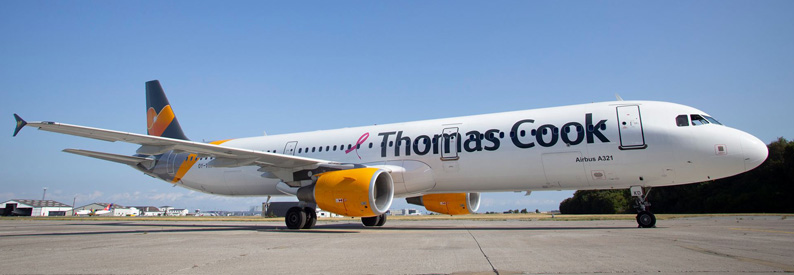
British tour company Thomas Cook collapsed early Monday after failing to secure emergency funding, leaving tens of thousands of vacationers stranded abroad.
The British government said the return of the 178-year-old firm’s 150,000 British customers now in vacation spots across the globe would be the largest repatriation in its peacetime history. The process began Monday and officials warned that delays are inevitable.
The Civil Aviation Authority said Thomas Cook has ceased trading, its four airlines will be grounded, and its 21,000 employees in 16 countries, including 9,000 in the U.K., will lose their jobs. The company several months ago had blamed a slowdown in bookings because of Brexit uncertainty for contributing to its crushing debt burden.
The company had said Friday it was seeking 200 million pounds ($250 million) to avoid going bust and was in weekend talks with shareholders and creditors to stave off failure. The firm, whose airliners were a familiar sight in many parts of the world, also operated around 600 U.K. travel stores.
The company’s chief executive, Peter Fankhauser, said in a statement read outside the company’s offices Monday morning that he deeply regrets the shutdown.
“Despite huge efforts over a number of months and further intense negotiations in recent days we have not been able to secure a deal to save our business,” he said. “I know that this outcome will be devastating to many people and will cause a lot of anxiety, stress and disruption.”
Britain’s CAA said it had arranged an aircraft fleet for the complex British repatriation effort, which is expected to last two weeks.
“Due to the significant scale of the situation, some disruption is inevitable, but the Civil Aviation Authority will endeavor to get people home as close as possible to their planned dates,” the aviation authority said in a statement.
Describing the repatriation plan, British Transport Secretary Grant Shapps said dozens of charter planes, from as far afield as Malaysia, had been hired to fly customers home free of charge. He said hundreds of people were staffing call centers and airport operations centers.
British travel expert Simon Calder told Sky News that Thomas Cook’s problems started in 1994 when the “open skies” agreement allowed upstarts EasyJet and Ryanair to flourish. At the same time, he said, the internet became widely used for travel bookings, lessening the demand for Thomas Cook’s travel agencies.
“There’s still, of course, a place for travel professionals, there’s a place for the package already, as companies like Jet2 and TUI are demonstrating, but Thomas Cook was behind the curve and I’m afraid with high costs such as those expensive high street premises they simply couldn’t cope,” he said.
Traveler Lucy Jessop from the eastern city of Hull said she had been scheduled to return from Mexico to Manchester with Thomas Cook on Tuesday and that the government had organized an alternative flight back to England.
“It’s the employees of Thomas Cook and all those due to go on holiday I feel for,” she said. “We were the lucky ones, I suppose.”
Unions representing the Thomas Cook staff had urged the British government to intervene to prop up Thomas Cook to protect jobs and the traveling public.
British Prime Minister Boris Johnson, traveling to New York for the United Nations General Assembly, said the government was right not to bail out the company, arguing that travel firms should do more to ensure they don’t collapse.
Johnson said bailing out the company would have established “a moral hazard” because other firms might later expect the same treatment.
“We need to look at ways in which tour operators one way or another can protect themselves from such bankruptcies in future,” Johnson said. “One is driven to reflect on whether the directors of these companies are properly incentivized to sort such matters out.”
Most of Thomas Cook’s British customers are protected by the government-run travel insurance program, which makes sure vacationers can get home if a British-based tour operator fails while they are abroad.
An earlier repatriation exercise following the 2017 collapse of Monarch Airlines cost the government about 60 million pounds.
Thomas Cook, which began in 1841 with a one-day train excursion in England and now operates in 16 countries, has been struggling over the past few years.
An estimated 1 million future travelers will find their bookings for upcoming holidays canceled. They are likely to receive refunds under the terms of the government’s travel insurance plan.
The company’s troubles were already affecting those traveling under the Thomas Cook banner.
A British vacationer told BBC radio on Sunday that the Les Orangers beach resort in the Tunisian town of Hammamet, near Tunis, demanded that guests who were about to leave pay extra money, for fear it wouldn’t be paid what it is owed by Thomas Cook.
Ryan Farmer said many tourists refused the demand since they had already paid Thomas Cook, so security guards shut the hotel’s gates and “were not allowing anyone to leave.”
It was like “being held hostage,” said Farmer, who is due to leave Tuesday. He said he would also refuse to pay if the hotel asked him.
The Associated Press called the hotel, as well as the British Embassy in Tunis, but no officials or managers were available for comment. www.yahoo.com
Emirates diverts Delhi-Dubai flight after ‘drone activity’ at airport
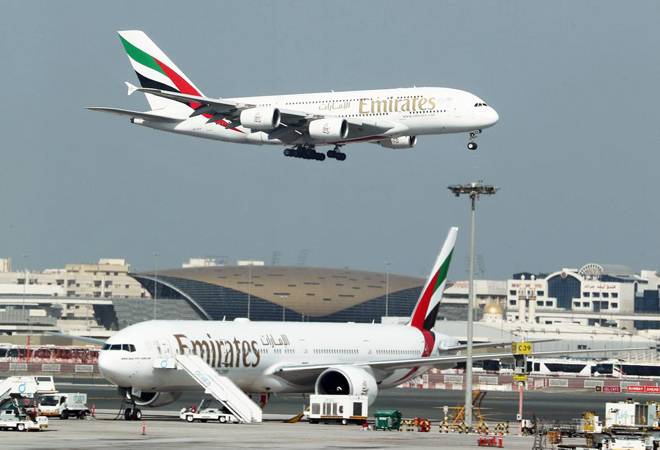
Dubai international airport had faced a similar situation in 2015 and 2016 when unauthorized drones flew on its airspace.
Emirates, on Sunday, had to divert many of its flights, including the Delhi-Dubai flight at Dubai International airport due to ‘drone activity’ in the surrounding of its airspace. The unauthorized drone activity led to at least half an hour of the shutdown of Dubai International Airport. According to Gulf News, the airport was shut between 12:36 pm to 12:51 pm (2:00pm – 2:21pm IST) on Sunday.
Flight EK 433 from Brisbane and Singapore to Dubai was diverted to Dubai World Centre. Delhi to Dubai Flight EK 511 was diverted to Sharjah International Airport (SHJ).
Emirates in a statement said, “The drone activity took place despite repeated warnings by concerned authorities that such individual actions are serious violations of regulations that seek to prevent unauthorized aerial activity in the vicinity of airports”.
However, the airline expressed regret to its passengers over inconvenience and said that it had provided alternative booking options and hotel accommodation to the affected passengers.
The diverted flights returned to Dubai after a few hours when the airspace reopened.
According to Gulf News, the Dubai international airport had faced a similar situation in 2015 and 2016, when unauthorized drones flew on its airspace.
A resolution was passed in 2017 imposing a fine of Dhs 20,000 ($5,445) on flying of unauthorized drones in Dubai.
London Heathrow No. 1 in airport connectivity
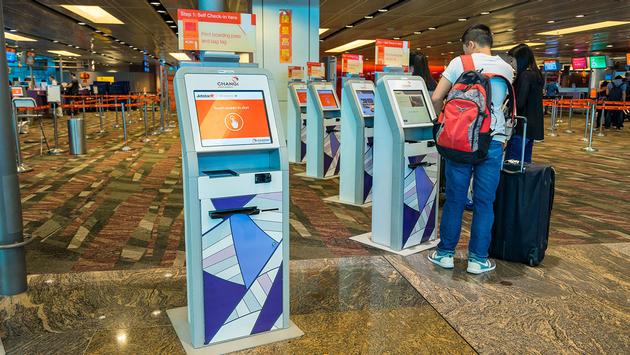
OAG, the world’s leading provider of travel data and insight, released its Megahubs Index 2019. The analysis reveals the Top 50 most internationally connected airports in the world and the Top 25 most domestically connected airports in the U.S.
London Heathrow (LHR; International Connectivity Index: 317) is the world’s most internationally connected airport for the third straight year. On the busiest day in aviation this year, over 65,000 international connections were possible within a six-hour window. Frankfurt International Airport (FRA; ICI:309) moved up one spot in this year’s global rankings, giving Europe the top-two spots in the world. Chicago O’Hare (ORD; ICI:290), Amsterdam (AMS; ICI:279), and Munich (MUC; ICI:259) followed closely behind.
“Munich’s 22-point increase in connectivity catapulted the airport from 11th in 2018 to this year’s Top 5. Given the ongoing share battle between Lufthansa and Ryanair for the German market, Munich’s investment to broaden its international network is paying off,” said John Grant, senior analyst with OAG.
The most connected international hubs in the Asia Pacific include Singapore in ninth (SIN; ICI: 240), Hong Kong in 10th (HKG; ICI:234), Incheon in 11th (ICN; ICI:233), and Bangkok in 14th (BKK; ICI:214). Kuala Lumpur (KUL; ICI:150) is the most connected Megahub in the world for low-cost carriers (LCCs).
For more insights from the Megahubs Index 2019 and the full methodology, view the full analysis here. https://www.businesswire.com/news/home/20190923005016/en/
Airbus wants to know everything passengers do on an airplane

Airbus wants to know everything passengers are consuming on board – from coffee to movies, even toilet paper.
The European manufacturer and Boeing’s chief rival, last month began flying one of its A350-900 wide-body aircraft to test what its executives think is the cabin of the future: full of sensors that collect data on the onboard habits of its passengers.
“It’s not a concept. It’s not a dream,” said Airbus’ vice president of cabin marketing, Ingo Wuggetzer, at an industry conference in Los Angeles this week.
The goal is to gather data on passenger behavior and consumption on board, information that could save airlines money and relieve pain points on board for passengers such as the mad scramble for overhead bin space and lavatory queues.
Airbus has added sensors throughout the aircraft, which it’s using as a flying laboratory that would collect data about passengers’ use of certain parts of the plane and items on board. The information collected from the so-called Flight Lab is shared with both cabin crew, to address with supplies on board, and with the airlines tasked with ordering them.
For example, Airbus is planning to track how many times the lavatory latch is opened and closed so the airline and cabin crews know how often the bathrooms are being used, and have a better idea when to restock items, such as toilet paper or soap. That will also give airlines a better sense of how many lavatories they need on board, Wuggetzer said. The manufacturer also wants to track things like how many times seats are reclined, he said, to give airlines a better sense of when they need maintenance so airlines aren’t suddenly left with a nonworking seat, forcing them to lose revenue.
The data is gathered from the sensors through an onboard Wi-Fi system and then shared with flight crews. The information will be shared with airlines once the plane lands.
Airbus is also planning to add small cameras onboard to monitor how many people are waiting for the bathrooms, and then let travelers know the approximate wait times or which one they should use. To minimize privacy concerns, Wuggetzer said passengers’ faces will be blurred out.
That also goes for food purchases and orders on board, so airlines don’t over- or under-order items.
The International Air Transport Association, an industry trade group that represents most of the world’s airlines, estimated that carriers generated 5.7 million metric tons of cabin waste in 2017 and said due to growing numbers of passengers on board this could double by 2027.
Don’t expect these features to show up on your next flight in the very near future. Wuggetzer said commercial airlines are yet to test them out and it’s not clear whether these carriers are willing to shell out more for the features.
The tests on the A350 are scheduled to continue through the end of the year.
The best luxury spas at sea

A vast blue ocean. An ever-receding horizon. You, your soulmate. Magnesium-salted whirlpools and rows of heated day loungers. Bottled water on tap. Cold face towels infused with the essence of citrus peel and basil leaf. Rose-scented massage oil. A groovy therapist or three fawning over your nails with polish and cuticle cream. Enya’s Orinoco Flow playing in the background, reports Fiona Carruthers.
I mean, really, what’s not to like about the average luxury day spa at sea.
As the demand for cruising just keeps on growing, cruise lines continue to evolve and ramp up their offerings. There’s not a lot of bandwidth left on board for more celebrity chefs and restaurants, not to mention the entertainment line-up – from Broadway shows to opera and fado. Ships also already boast everything from minigolf courses and tennis courts to zip lines and surf wave machines.
So cruise directors have been eyeballing the good old day spa. Once tucked away like an afterthought at the back of the ship, now there are irresistible deals on most cruise itineraries for personalized wellness programs, including carb-restricted afternoon tea served by your private butler, followed by a 90-minute daily oxygen facial.

And as with most other onboard offerings, your bespoke health and fitness routine can be as minimalist or as lavish as you wish.
Like many cruise lines, Europe river cruise specialist Uniworld is doing more to help its guests stay fit and healthy on the water – and land – with new “Go Active” shore excursion programs, including complimentary bicycles and Nordic walking sticks. There are also sociable “gentle walking” groups or, to take it up a notch, you can spend the day biking through the Danube River’s Wachau Valley. To complement all that activity, Uniworld’s ships offer Travelling Lite menus so you don’t stack on those famed cruise kilos.
You can also swim it off. The brand’s four super ships each boast a small resistance pool with water jets to swim against. On the SS Catherine and SS Maria Theresa, the resistance pool is in a glass box – which frosts over when you’re swimming – right in the middle of the Bar du Leopard restaurants. At night, the water glows magnificent emerald green.
Active Encouragement
Uniworld’s newly appointed Australian managing director, Fiona Dalton, has just returned from a Lyon-to-Avignon cruise aboard the SS Catherine. Getting on-trend, she joined other guests at 7 am every morning for 40 minutes of gentle yoga on the deck.

“At first I didn’t know if I could keep it up, but it’s the perfect way to start the day,” she says. “By the end of the cruise, early yoga had become as essential as my morning coffee.”
Also on the wellness bandwagon, Seabourn has just announced a mindful living program established in partnership with the Harvard University-trained physician and integrative medicine practitioner Andrew Weil. Dr. Weil will be on board the new Seabourn Encore’s inaugural cruise in January, after which the program will be rolled out across the Seabourn fleet, including the still under construction Seabourn Ovation, due to launch in spring 2018.
Each year, Weil will sail on a different Seabourn ship for designated cruises, offering small, informal group discussions as well as free lectures on topics including spontaneous happiness and healing, anti-inflammatory foods, and healthy aging. The program is based around complimentary sessions and seminars on the daily practice of meditation and yoga.
It’s a strong addition to Seabourn’s wellness offering, with its Odyssey-class ships already featuring Kinesis fitness walls with a patented 360-degree pulley system. Talking of fitness walls, when Crystal Symphony recently underwent a $20 million refurbishment, the ship gained an outdoor fitness garden.

Italian-flagged Silversea Expeditions is also encouraging its guests to get active, with 13 wellness-themed cruises planned for the next 18 months aboard Silver Discoverer. In partnership with Technogym, the Wellness Expedition Voyages include complimentary stretching, yoga and Pilates classes (both onboard and onshore, subject to weather and destinations). You also get fitness classes, one complimentary spa massage and daily healthy cooking demonstrations.
“These voyages are perfect for travelers seeking a personal journey to wellness to complement their quest for adventure,” says Silversea’s general manager in Australasia, Karen Christensen.
Nordic Cool
From active to just plain decadent, the American Canyon Ranch Spa Resorts (founded in Arizona in1979) can also be found at sea – onboard Cunard’s Queen Mary 2, and aboard Celebrity, Oceania and Regent Seven Seas ships.

Meanwhile, that pinnacle of luxury afloat, The World (offering the only residential apartments at sea, priced from about $US1.3 million [$1.7 million] up), has just come out of the dry dock with a number of improvements including new pedicure and manicure stations, a new barbershop and Pilates studio, and a refreshed physiotherapy room.
Meanwhile, it’s literally getting cooler to cruise aboard the Nordic lines. Viking has set a new industry standard with lavish Liv Nordic spa and Nordic bathing options included in the cost of the cruise. Viking’s two ocean ships, Viking Star and Viking Sea have snow grottos (see more on this below). Norwegian Cruise Lines (NCL) offers plenty of fitness activities, including Flywheel, TRX, and the boxing-inspired Norwegian Fight Klub.
Norwegian Escape, Breakaway Class ships and Norwegian Epic offer special spa staterooms with easy access to the Mandara Spa and complimentary use of their Thermal Spa Suites, saunas, hydrotherapy pools, steam rooms, and heated loungers. As NCL’s marketing guff puts it: “All you have to do is unpack and say ah.”
Life & Leisure road-tests three of the newest day spa offerings at sea.
Going swimmingly: AquaClass on Celebrity Solstice
It’s a slightly bizarre experience stripping off and donning a spa gown in preparation for a mini-facial while staring at the Opera House about 400 meters away. But that’s what comes of touring the Celebrity Solstice at berth in Circular Quay, Sydney, earlier this year.
Celebrity Solstice recently introduced AquaClass, special cabins located close to the spa and its healthy restaurant, Blu. The cabins are available only to adults, making this part of the ship quieter; 130 of the ship’s 1426 staterooms are now AquaClass suites. The upside, naturally, is that you don’t have to traipse through the entire ship in your robe and slippers to get to the spa.
The ship has also joined forces with Randi Zuckerberg (American businesswoman and sister of Facebook guru Mark Zuckerberg) on a new range of spa treatments dubbed “Take care of your selfie”.
Celebrity Solstice’s lavish Canyon Ranch SpaClub facilities – complimentary for AquaClass guests – include a Persian Garden aromatic steam room, sensory (light and sound) showers and Swedish and herbal saunas. (Other guests can enjoy the facilities, too, for a small charge; and there’s even a special area and menu for spa-goers aged 13 to 17.)
The AquaClass cabins are pretty much like normal cabins, but without the temptations – the bar fridge and in-room edible goodies are healthy, while the toiletries are spa themed.
It’s a great option for the committed spa junkie. Whether you’re cruising the Mediterranean or Australian coastline, you could just about get through the entire cruise in a terry toweling robe with swimmers underneath.
But back to my facial. My gorgeous young German therapist breaks it to me gently, his hand on my shoulder, that my skin is well, to be honest, a little dehydrated and sun-damaged. And there I was thinking I could pass for Elle on a good day. Ah well. It’s hard to get too distraught when you’re lying under a steam machine with a lavender eye mask. Besides, nothing a bit more SPF can’t fix I muse, agreeing instantly (despite the fact my eyes are closed) to buy the large tube of miracle cure he just placed in my right hand.
When he’s done, Celebrity Solstice’s kindly staff practically need a crane to get me off the spa table, off the ship, and into Sydney’s frantic Friday afternoon traffic. Talk about parallel universes. I vow to them I’ll be back.
Celebrity Solstice Oxygen boosts facial $US203; Essential men’s facial $US135 (both 50 minutes).
A haven of calm: Greenhouse Spa & Salon on MS Koningsdam
Perhaps the biggest upside to the spa on Holland America’s new ship MS Koningsdam is it’s never crowded. That’s because numbers are deliberately limited to keep the ambiance peaceful. (Small tip: sign up early.) A day or weekly pass gives passengers access to lockers containing white cotton robes and slippers. Pop these on and head to the large thermal pool, which has powerful water jets at its center to massage stressed shoulders and backs and more gentle streams of water trickling from the ceiling around the edges.
Next, try the sauna and steam rooms – there are female- and male-designated saunas at the edge of the ship with sheer views through the glass walls down to the sea, and the third sauna for men and women. The steam room seats about a dozen people (although I was often the only one in there) and has an enormous porthole to contemplate the sea.
As you step out, you can pull the handles of suspended wooden buckets and they will dump icy water over you – or, if your body doesn’t like rude shocks, you can have a hot shower. Then relax with a glass of cranberry juice on one of the spa’s curved and heated ceramic beds.
Treatments range from facials to massages to acupuncture, as well as regular salon services such as haircuts and blow-dries.
I was slathered in lime and ginger salt scrub, wrapped in plastic, and lowered into a float bath until – like James Bond rescued just before the spinning device he’s trapped in gets the better of him – the therapist returned to let me out. She was excellent but be warned, the spa services are provided by an external company, Steiner, and they don’t hesitate to push their beauty products.
The Greenhouse Spa & Salon is open from 8 am until 10 pm. A seven-day pass costs $US149. A 50-minute salt scrub costs $US155 and the popular 75-minute hot stone massage is $US195. A 15 percent service charge is added to all treatments.
Fire and ice: LivNordic Spa on Viking Sea
The Vikings might not be famed for their personal hygiene, but this spa delivers in spades. Traditionally a river cruise specialist, Viking Cruises has two ocean liners as of last year, with two more on order. Both the ships’ LivNordic Spas are operated by Raison d’Etre Spas, based in Stockholm.
Aboard Viking Sea in May for her pre-christening cruise, I had the chance to try out Nordic bathing. LivNordic Spa is a relaxation utopia with a hairdresser, nail salon, barber and fitness center. But the heart of this sumptuous complex is a large, dimly lit room with a hydrotherapy pool in which you lie on sunken metal day beds, your head, and shoulders propped above the swirling waters. There’s a smaller saltwater pool, and, in the far corner, four ceramic-tiled thermal loungers. A steam room and snow grotto (no bigger than an Inuit’s hut with a floor of freshly made snow) complete the picture.
The ladies and gents’ changing rooms feature saunas constructed of sweet-smelling birch and a cold plunge pool set to a brisk 12 degrees. (By contrast, most Scandinavians would bathe in the water of about 2 degrees). The idea with Nordic bathing is to relax in the steam room or sauna for about 10 minutes, then dunk in the cold pool or stand in the grotto – or, for the fearless, douse yourself with icy water in a bucket suspended next to the steam room. Common Scandinavian wisdom has it that unless you have a medical condition or blood pressure issues, hot and cold bathing is excellent for your health. Not only is it invigorating, but it also helps relax tired muscles, increase blood circulation and aid detox. It can even boost immunity.
In the separate his and hers change-rooms, there’s an abundance of fluffy bathrobes and huge towels, plus comfy spots to sit. There’s also complimentary still and sparkling water; tea, books, magazines, no Wi-Fi reception and, best of all, mind-numbing beige décor to stare at – plus large portholes to enjoy the view outside. Here’s to good health (with herbal tea in a recycled bamboo mug, of course).
LivNordic Swedish massage from $US99 for 90 minutes. www.afr.com/
Here’s Why Planes Fly at 36,000 Feet

It’s a common situation for travelers. You fasten your seat belt, listen to the pre-flight safety demonstration (we hope), and prepare yourself for takeoff. After a few moments, the pilot comes on the overhead, “Ladies and gentlemen, we are now at our cruising altitude of 36,000 feet.”
It’s time to kick back and wait for that refreshment cart to come around. But how many of us have stopped to wonder why planes go this high up in the first place? According to USA Today, the common cruising altitude for most commercial airplanes is between 33,000 and 42,000 feet, or between about six and nearly eight miles above sea level. Typically, aircraft fly around 35,000 or 36,000 feet in the air.
To put that in perspective, the peak of Mount Everest measures at 29,029 feet. But this is why we have pressurized cabins: so you don’t feel as if you’re literally trying to breathe on top of Mount Everest.
The area is called the lower stratosphere, which is just above the troposphere, the lowest part of the atmosphere, according to the UCAR Center for Science Education. Flying in this area has many benefits that make flying one of the leading ways for travelers to get from one place to another.
Fuel Efficiency
The biggest reason for this altitude lies with fuel efficiency. The thin air creates less drag on the aircraft, which means the plane can use less fuel in order to maintain speed. Less wind resistance, more power, less effort, so to speak. Spending less on fuel is also great for airlines, for obvious reasons. Keep in mind though, a plane’s engines also need oxygen in order to work, according to Traveller, since they need this molecule to create combustion, which also creates energy. So, flying too high can also cause problems. Plus, the higher a plane goes, the more fuel it has to burn in order to get there so there are some drawbacks with certain altitudes as well.
Avoiding Traffic and Hazards
Yes, there is “traffic” up in the air. Flying higher means planes can avoid birds (usually), drones, and light aircraft and helicopters, which fly at lower altitudes. According to Your Mileage May Vary, the direction in which your plane is traveling can also affect what altitude it will climb to. Planes flying eastward (including northeast and southeast) will fly at odd altitudes (i.e. 35,000 feet) and all other directions will fly at even altitudes. Routes going in the same direction are also often planned so that planes are 1,000 feet above or below each other to avoid a collision.
Weather
Have you ever wondered why the view outside your plane window can be sunny one moment and rainy the next upon descending into your destination airport? That has everything to do with the altitude. Most planes are flying above the troposphere, where weather events usually happen, according to Traveller.
Turbulence
Of course, turbulence still happens on airplanes, but you may be surprised to know that it happens a great deal less because of the high altitude of many commercial flights. According to The Points Guy, when planes run into air pockets and fierce winds, air traffic controllers can sometimes suggest different altitudes to avoid it. According to USA Today, flying higher can actually minimize turbulence.
Emergencies
A higher altitude can also give pilots one precious commodity when they’re up in the air: time. According to Traveller, should something happen that would warrant an emergency landing, the high altitude gives pilots much longer to fix the situation or find a safe place to land than if they were on a light aircraft cruising at 10,000 feet.
Different Planes, Different Altitudes
Not all planes are made to cruise at the same altitude. According to Thrillist, a plane’s altitude is determined by its current weight and the atmospheric conditions at the time of flight. A flight direction (as mentioned above), the amount of turbulence (based on reports by other pilots in the air), and flight duration are also factors.
Who Makes The Call?
Despite pilots being in control of the plane, they aren’t the ones who decide on its altitude. Air dispatchers, instead, are in charge of planning and deciding a plane’s route, including altitude, as well as tracking where an aircraft is in the air. According to Traveller, there are laws in place that dictate aircraft must not fly “below 1,000 feet over a built-up area, or 500 feet over any person, vehicle or structure.”
One pilot jetliners flying anytime soon?
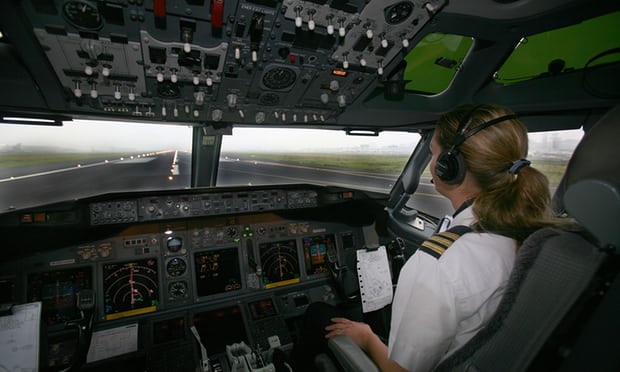
Some airlines want Boeing’s new ’797′ to fly with just one pilot on board. Boeing’s next commercial jet design could come with a cockpit built for just one pilot, according to industry analysts. Rumors have swirled for months that the U.S. plane manufacturer will announce a New Midsize Airplane (NMA), dubbed by industry insiders as the 797, at the Paris Air Show in 2019.
Decades ago, there was a flight engineer present in the cockpit of commercial airplanes whose job was to monitor aircraft systems and diagnose problems. With the advent of integrated circuits and advances in computing power during the early 1980s, this job was eventually eliminated. Today, we almost universally see two pilots in the cockpit. However, there is serious talk of reducing that number to one. Airbus and Thales have stated that this could become a reality as soon as 2023.
A heated debate is underway over the issue. Airlines would like to balance safety with profits. The FAA is tasked with keeping the flying public safe through regulation, oversight, and inspection. Pilots want to ensure safety and reasonable working conditions. And of course, the public ultimately drives this discussion with our pocketbooks. There are many different points of view, but for the sake of brevity, here are the three most common arguments that I keep hearing.
Three Arguments in Favor
It will ease the pilot shortage
It is no secret that the aviation industry faces a worldwide shortage of qualified pilots. The number of licensed pilots has decreased by about 30% over the past three decades. Numerous estimates cite the need to hire thousands of new pilots. Some air carriers reduce or cancel, flight schedules as a result of these pilot shortages. In an effort to pilot their fleets, airlines have increased wages and signing bonuses, among other things. In their eyes, one of the easiest ways to address this problem of supply is to reduce demand. By eliminating the co-pilot from the cockpit, they can remove much of the problem.
It would save the airlines lots of money
One obvious benefit of reducing the pilot pool is that you now also reduce the recurring salaries by the same amount. Airlines argue that they would save a lot of money by removing half of the pilots, as these are usually among their highest-paid employees. It will also help the airlines cut costs because they will no longer have to increase wages and signing bonuses since there will no longer be a pilot shortage. They say this will help to reduce ticket prices and that consumers will also benefit.
It gives aircraft manufacturers more options
If an aircraft manufacturer only has to accommodate one pilot in the cockpit, then they can start being more creative with their designs. Furthermore, they can start allowing the automation to do more, as they did when the flight engineer was removed many decades ago. Programmers generally argue that automation is superior to human pilots. Flights are smoother and more fuel-efficient, as the automation is able to make a million decisions per second, while a human is simply human. In fact, some airlines will not allow their pilots to fly manually during certain periods of flight. A survey of Airbus and Boeing pilots found that they manually fly about 3-6 minutes per flight; the rest of the time is in autopilot mode. Presumably, the amount of autopiloted flight would increase with the elimination of the co-pilot.
Three Arguments Against
Automation is not perfect
As we have seen from the Boeing 737 Max crashes in Indonesia and Ethiopia, disasters can occur from human-automation interaction in the cockpit. There is a laundry list of accidents at least partially caused by breakdowns in the human-automation team. Some, like Air France flight 447 from Brazil to Paris, resulted in total loss of life on board. Even highly reliable automation can create problems by eroding pilots’ manual flying skills and breeding complacency and lack of situational awareness. When automation fails, the pilot is often left struggling to figure out what went wrong.
There will be a loss of human redundancy
From the time they enter the cockpit, the captain and first officer work as a team. They coordinate the prepping of the aircraft, go through the checklists together, and decide as a team when they are ready for flight. This procedure has huge benefits. First, it encourages accountability. Having someone present to verify that you have done your job increases compliance. Second, having a second pair of eyes helps to detect problems or issues as they arise. One pilot alone cannot see two things at once; they cannot both scan the outside while monitoring displays. Third, it offers huge benefits during emergencies and decision-making processes. A co-pilot is good for helping to maintain calm and professionalism. A co-pilot helps by going through the emergency checklist while the captain aviates. A co-pilot is good for bouncing ideas off when things get messy. One must wonder how difficult it would have been for Captain Sullenberger to land that airplane in the Hudson River without Jeff Skiles.
The flight is more likely to wind up completely pilotless
Removing the co-pilot will mean that if the pilot becomes incapacitated, then you will be on an airplane with no one in control. Just like everyone else on board, pilots often fall asleep in airplanes, even when they are in the cockpit. A survey of pilots showed that more than half of them have slept while flying. The fatigue problem has gotten so bad that some airlines allow pilots to take naps in the cockpit. Second, if a pilot has a heart attack or other potentially fatal event, there will be no one there to notice, especially on a long-haul flight. Third, hypoxia (a loss of oxygen) affects people differently. One pilot might start experiencing symptoms before another one does, and the second pilot would notice this and remediate the situation. A pilot by herself could just pass out, leaving the aircraft pilotless. The rest of the flight crew and passengers would be completely clueless.
Conclusions
Clearly this is a hot button issue, and both sides take their arguments very seriously. A thorough discussion must occur before policies are made that could negatively affect aviation safety.
Boeing said the NMA was not a plane that would herald a technological revolution. “We remain focused on executing on our commitments, including evaluating the business case for the NMA. With that said, should we launch, the NMA flight deck is being designed for two pilots and we’ve been consistent that we don’t see NMA as a technology push airplane,” it read.
Carnival Cruise Line Goes Bigger and Cleaner Than Ever
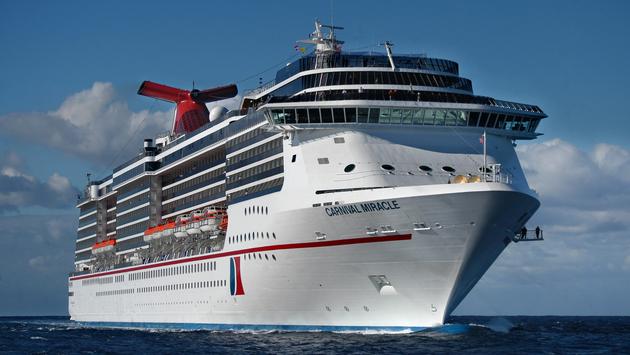
Photo courtesy of Carnival Cruise Line
The cruise industry is ever-evolving and growing, and today, Carnival Corporation has announced plans for three new ships – its two largest for the Carnival Cruise Line brand and one more for P&O Cruises – all of which will be powered exclusively by clean-burning Liquefied Natural Gas (LNG).
As for size, the new pair of 180,000-ton Carnival ships will exceed the 164,600-ton Norwegian Escape, the current biggest from Norwegian Cruise Line, and approach Royal Caribbean International’s 226,963-ton Harmony of the Seas, the largest cruise ship in the world. Despite falling short of the 5,479-passenger Harmony by over 45,000 tons, the new Carnival ships will come closer to its capacity with 5,200 guests onboard.
If that’s starting to sound cramped, it probably shouldn’t.
Carnival Corp. previously revealed plans to build four even larger ships over 180,000 tons each for its AIDA Cruises and Costa Cruises brands that will carry a staggering 6,600 passengers. At that time, Carnival said, “A major part of the innovative design involves making much more efficient use of the ship’s spaces, creating an enhanced onboard experience for guests.”
Part of the efficiency in space might be coming in part thanks to the new power-plants. LNG signifies Carnival Corp.’s “green cruising” initiative by powering 100 percent of the ships’ energy needs at sea and in port. Currently, the company’s new AIDAprima for the German AIDA Cruises brand is the first cruise ship to be powered by LNG as built at Mitsubishi Shipbuilding in Japan.
Carnival Cruise Line’s yard shift from Fincantieri in Italy to Meyer Turku in Finland is likely prompted by the LNG technology as Meyer Werft and Meyer Turku will be building five other future vessels using the new fuel source for AIDA Cruises, Costa Cruises, and P&O Cruises as well.
Also pursuing LNG power is MSC Cruises for its World-class ships to be built at STX France in Saint-Nazaire for launches beginning in 2022. Meanwhile, the Carnival ships are set to come online in 2020 and 2022.
The push to go both larger and cleaner parallels endeavors for greater efficiency and higher profits. Larger ships follow an economy of scale wherein a single ship with a larger capacity is more effective than several smaller ships carrying fewer passengers. LNG fuel prices are stable now, so the investment in the technology is prudent. However, in the past, gas turbine power for cruise ships was also clean but eventually cost-prohibitive, requiring a greater return to diesel fuel over time. The long-term economic efficiency of LNG is still to be determined.
Looking to the future, there is seemingly no end in sight for bigger cruise ships across the board. The only thing ever holding back their increase is the size of the shipyards as well as the international ports that can accept them.
Provided both continue to scale up, cruise ships are likely to get larger still.
Everything travelers need to know about Boeing 737 Max developments
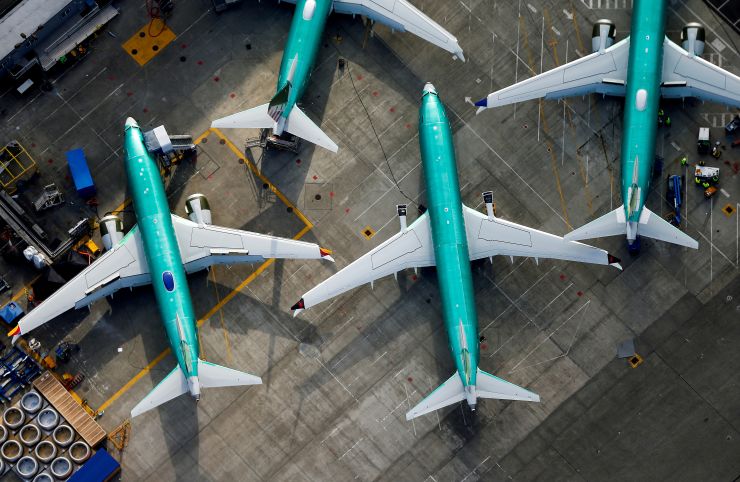
What started as a nightmare scenario – two crashes of the same type of jet within five months that killed 346 people – has turned into a global aviation chess game of the highest stakes.
The Boeing 737 Max has been grounded worldwide following the second crash, in March, and there is no indication when it will be allowed to fly again. The Chicago-based manufacturer is addressing issues with the flight-control system that appears to have played a role in both the crash of Lion Air Flight 610 in Indonesia and Ethiopian Airlines Flight 302 in Ethiopia. Boeing executives have said they are planning for the jet to come back early in the fourth quarter of this year, but nothing has been confirmed, and regulators still must sign off.
On Monday, new Federal Aviation Administration Administrator Stephen Dickson said during his swearing-in ceremony the return would not be rushed.
“This plane will not fly in commercial service again until I am completely assured that it is safe to do so,” he said. “The FAA is not following any timeline for returning the aircraft to service. Rather, we are going where the facts lead us and diligently ensuring that all technology and training is present and correct before the plane returns to passenger service.”
In the meantime, airlines have canceled thousands of flights on both the Max 8, the specific aircraft involved in the crashes, and Max 9, another aircraft in the series; scrapped routes; deserted airports; and taken financial hits amounting to hundreds of millions of dollars. Carriers are adjusting their fleets and schedules to not only make up for the planes that are out of service, but also compensate for the new planes that were on order that will now be delayed.
Even with those disruptions, consumers have thus far largely been shielded because this new model was not yet ubiquitous. Although Boeing says the 737 Max was its fastest-selling aircraft, with about 5,000 orders from more than 100 customers, fewer than 400 have been delivered to airlines around the world. According to Bloomberg, just 3 percent of the mainline fleet in the United States is made up of the aircraft. Still, the aviation industry is scrambling, and it’s getting more likely that everyday travelers might feel the pinch.
These are some of the developments in the industry that have been most likely to affect travelers:
March 24, 2019: American Airlines extends cancellations through April 24, announcing that it expects to cancel 90 flights a day. The airline operates 24 Boeing Max planes. Southwest Airlines, which has 34 of the aircraft, says the following day that it has an average of 130 cancellations a day out of more than 4,000 flights systemwide.
April 11: Southwest says it is removing the aircraft from its schedule through Aug. 5, resulting in about 160 flight cancellations a day, USA Today reports.
April 14: American Airlines again extends cancellations, this time through Aug. 19. The carrier says the move will affect about 115 flights a day. United, which has 14 of the jets, follows suit and stretches cancellations into early July after trying to minimize the number of flights it would cut, CNBC reports.
May 7: A survey of 1,765 fliers by Barclays, the investment bank, showed that 52 percent of respondents said they would prefer to fly on a different type of plane. Just 20 percent said they would fly on a 737 Max as soon as they returned to the skies, while 39 percent said they would return within a few months, and 44 percent said they would wait a year or more.
June 26: During testing, the FAA identifies a new potential issue related to the flight-control computer that could delay the jet’s return even longer.
July 2: Media reports reveal that American has temporarily axed a daily nonstop flight between Dallas and Oakland, Calif., because of the Max grounding. The Points Guy, an airline news site, reports that Southwest has suspended at least 13 routes because of the ordeal.
July 12: United announces plans to pull Max flights from its schedule through Nov. 3. The airline says it expects to cancel nearly 8,200 flights between July and November as a result. American follows, extending cancellations through Nov. 1. Nearly a week later, Southwest removes the Max from its schedule through Nov. 2, resulting in 180 fewer flights a day.
July 15: Facing uncertainty over the aircraft’s future, budget carrier Ryanair says it is deciding which airports it will fly to less frequently and which it will cut altogether, CNN reports.
July 24: Boeing reports its worst quarterly loss in history: $3.38 billion. The company warns that it may have to suspend production of the 737 Max after slowing down production earlier.
July 25: Southwest pulls out of Newark Liberty International Airport altogether, consolidating its regional operations at LaGuardia in New York City. Executives say the airline will remove the Boeing Max from the schedule through Jan. 5, 2020.
July 30: CNN reports that United will temporarily cut its daily round-trip flight between Chicago and Leon, Mexico, effective Sept. 3.
Aug. 13: Blaming the grounding, Norwegian Air cuts flights between Dublin and three North American cities. The budget airline says it will no longer serve New York’s Stewart Airport, in the Hudson Valley; T.F. Green Airport, near Providence, R.I.; and John C. Munro Hamilton International Airport in Hamilton, Ontario.
Aug. 13: Boeing reports that no one ordered a Max jet in July, the fourth straight month without a new order, CNBC reports.
U.S. Air regulators ban Apple MacBook Pros with recalled batteries from flights

The U.S. Federal Aviation Administration has banned certain MacBook Pro laptops on flights following an announcement by Apple Inc. that some use batteries that pose a fire or safety risk.
“The FAA is aware of the recalled batteries that are used in some Apple MacBook Pro laptops. In early July, we alerted airlines about the recall, and we informed the public,” the FAA said in an emailed statement.
“We issued reminders to continue to follow instructions about recalls outlined in the 2016 FAA Safety Alert for Operators (SAFO) 16011, and provided information provided to the public on FAA’s Packsafe website: https://www.faa.gov/hazmat/packsafe/,” it added.
Apple announced in June “a voluntary recall of a limited number of older generation 15-inch MacBook Pro units which contain a battery that may overheat and pose a safety risk.”
The laptops were sold between September 2015 and February 2017 and can be identified by their product serial number, according to the company’s notice.
Apple, in its announcement, said that “customer safety is always a top priority,” and it would replace the affected batteries free of charge.
Some international carriers also have banned the MacBook Pros. Four airlines with cargo operations managed by Total Cargo Expertise – TUI Group Airlines, Thomas Cook Airlines, Air Italy, and Air Transat – this week barred the laptops from flying as cargo, according to Bloomberg.
It is not immediately known how many MacBook Pros will be effected by the ban. About 432,000 MacBook Pros with faulty batteries were sold in the U.S., according to a Canadian air safety notice cited by Bloomberg, while another 26,000 were sold in Canada. www.npr.org
Cathay Pacific gets air safety warning
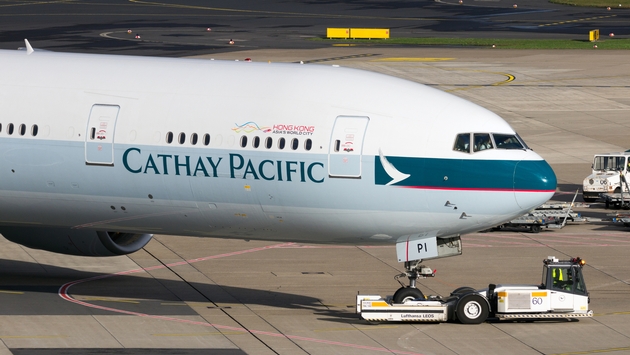
China’s aviation authority issued a major air safety warning to Hong Kong-based Cathay Pacific Airlines on Friday, after the airline was criticized for its tacit support of anti-government riots that may expose passengers to safety threats.
“In recent days, the Cathay Pacific has exposed high safety risks and threats as a pilot who was arrested for participating in riots was still allowed to fly and a staff member had leaked the passengers’ flight information,” the Civil Aviation Administration of China (CAAC) said in the letter.
A series of incidents has caused serious social impact and created air safety risks from Hong Kong Special Administrative Region to the Chinese mainland, and the warning was issued to protect the safety of passengers and maintain air transportation order, the letter noted.
The CAAC requested airline to immediately suspend employees who have supported and participated in illegal protests and violence from working in flights to the Chinese mainland or related to mainland air transportation starting Saturday.
It also ordered the airline to submit the information of crew members who fly to the Chinese mainland or pass through the Chinese mainland to relevant authorities in the Chinese mainland starting Sunday. And if the information is not approved, airports in the Chinese mainland won’t receive the flights.
The CAAC also requested the airline to submit measures it has taken to strengthen internal management, improve flight safety and security to the authorities before August 15.
The agency will supervise and deal with the airline in accordance with law based on how Cathay Pacific executed the three warnings, the letter said.
In response, Cathay Pacific spokesperson said on Friday that they have received the directive and are studying it very carefully. There is zero tolerance to any inappropriate and unprofessional behavior that may affect aviation safety, Cathay Pacific said.
Some industry insiders have described the warning as a precaution on the state level to protect air safety in the Chinese mainland and prevent terrorist attacks.
The more popular hot dog places in New York
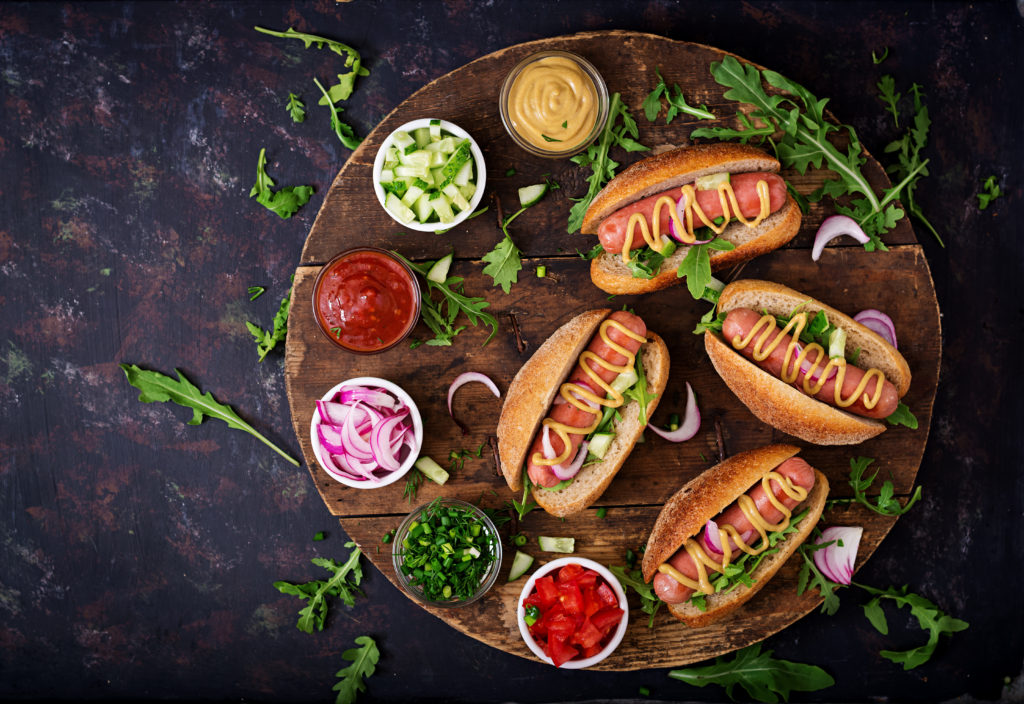
The hot dog has become an icon of New York, perhaps even more so than the pizza. Not only does it symbolize the city’s multi-national culture, but its diverse toppings and composition make it the meal to please any palette. We made a list of the top places to help find the perfect ‘dawg in the Big Apple.
Bark
One of the more popular hot dog places in New York, Bark hot dogs are renowned for their uncompromising quality and eclectic menu. Chow down on a classic NYC Dog, equipped with street cart-style onions and yellow mustard, or opt for something a bit more ‘out there’, like a Cheddar Bratwurst.
Asia Dog
Typical hotdogs but with an Asian twist, Asia Dog is a unique establishment that guarantees an unforgettable meal. Order a Ginny Dog, topped with kimchi and seaweed flakes, or get more adventurous with a Sidney, garnished with mango and cucumber relish, red onion, cilantro, crushed peanuts, and fish sauce.
Dogmatic
Dogmatic’s emphasis is on using fresh ingredients, and only organic meats. Whether you opt for a grass-fed beef hotdog or mac & cheese dog, you won’t have to worry about anything being disappointing: only wholesome awesomeness.
Papaya King
Papaya King started out as a juice shack until the owner married a German woman who introduced him to the miracle of hot dogs. Ever since then, Papaya King has been serving some of the best dogs alongside a free cup of juice. The menu is simple, and the food is amazing.
Crif Dogs
One of New York’s most popular hot dog joints, Crif Dogs serves authentic hot dogs and an array of delicious toppings. Go for a classic New Yorker dog and garnish it with anything from mustard to chili cheese or pineapple. A diverse menu of already topped hot dogs makes Crif Dogs an enticing grill to visit.
Shake Shack
From their shack-made lemonade to custard ice cream milkshakes, Shake Shack is a popular spot for locals and tourists alike. However, their hot dogs are also worth mention. You can choose from a classic Shack-cago dog, topped with homemade relish and mustard, or even enjoy a chicken dog, stuffed with apple and sage.
Walter’s Hot Dogs
Authentic down to its grilled onions, Walter’s Hot Dogs has been in operation since 1919. Not only can you enjoy perfectly grilled dogs topped with Walter’s own mustard, but you can also buy memorabilia in the shop, from t-shirts to relish.
Katz’s Delicatessen
One of the last remaining classic Deli’s in NYC, Katz’s Delicatessen is always a great stop for sandwiches – and their hot dogs are no exception. Using only the best meat, each hot dog is grilled to perfection and topped with pickles and relish.
The Smoke Joint
As you might guess from the name, The Smoke Joint’s hot dogs enjoy a delicious smoky flavor, which is sure to enhance your dining experience. Topped with pulled pork, their famous Joint Dog is a meaty masterpiece.
‘Drive-Thru Dreams’ explores America’s love-hate relationship with Fast Food
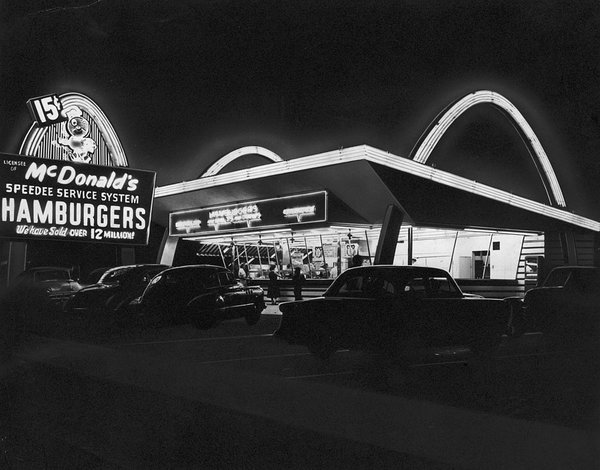
Do you want fries with that? It’s complicated.
Americans have a torturous relationship with fast food. We often vilify it for expanding our waistlines, yet we also look at it as a way to treat ourselves. And part of the reason we seek the guilty pleasures to be found in burgers, shakes and fries is the familiarity such foods evoke, says writer Adam Chandler.
“Even for people who haven’t had fast food in five or 10 years, they still have fond memories of sneaking out of high school with their friends and going to Taco Bell during their lunch breaks or going to McDonald’s for a birthday party when they were kids,” says Chandler, author of Drive-Thru Dreams: A Journey Through the Heart of America’s Fast-Food Kingdom.
In his book, Chandler describes the unshakable bond between Americans and fast food — which he explored during his travels across the country, from the Gulf of Mexico to the Great Lakes. This bond is defined by fast food’s connection to American history, as well as its ability to adapt to different times, palates and cultures. More at NPR.org
American offers the most Premium Economy seats in the U.S.
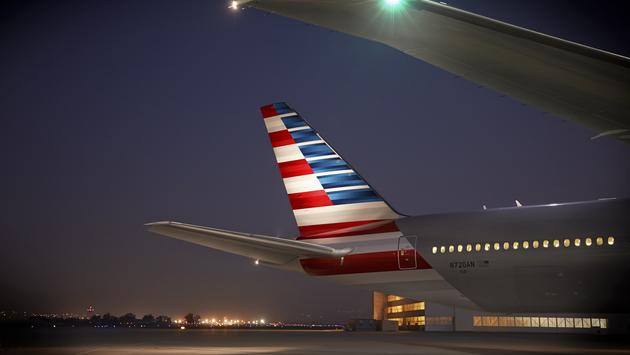
American Airlines announced it is the first carrier in the United States to finish installing Premium Economy seats on its widebody fleet. With American offering a total of 3,025 Premium Economy seats, the airline now boasts more than the other U.S. carriers combined. American was also the first U.S. airline to introduce the Premium Economy experience three years ago.
The Premium Economy seats are located between Flagship Business and Main Cabin on long-haul international flights and behind Flagship First on select flights to Hawaii and Alaska. In total, Premium Economy is available on American’s 124 Boeing 787s and 777s and Airbus A330-200s.
“Premium Economy is the perfect complement to the many travel experiences we offer, providing customers with even more options when flying,” American Vice President Janelle Anderson said in a statement. “As the first U.S. airline to introduce Premium Economy, we continue to invest in new ways to ensure customers’ time with American is well spent, like high-speed Wi-Fi, live TV, new amenities on the ground and more.”
American passengers who book Premium Economy seats will be able to enjoy more legroom, wider seats, extra recline, extendable footrests and an elevated onboard dining experience compared to Main Cabin.
Premium Economy customers also receive two free checked bags and priority benefits when checking in, going through security and boarding. The number of Premium Economy seats will increase by 10 percent next year as American takes delivery of 12 new Boeing 787-8s.
The best and worst U.S. airports
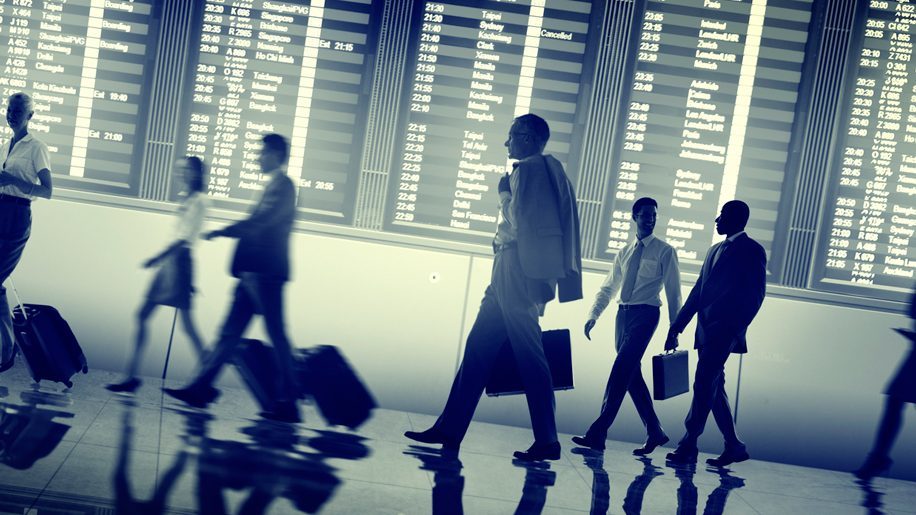
If you’ve ever had a bad experience traveling through Chicago’s Midway International Airport, you’re not alone: According to a new study published by The Points Guy, it ranks as the worst airport in the country.
That’s thanks to a lack of amenities — it only has one lounge, for instance — on top of long wait lines and a “less-than-desirable commute,” making it the worst of the 50 busiest airports in the U.S., according to the study.
Overall, calculations were based on 34 different variables, including flight delays, cancellations, ride-hailing prices, restaurants, lounges, and security wait times.
The study ranked San Diego International Airport as the best airport in the U.S. because of its ample amenities, a great record of timeliness and the best score for commute time.
The Best:
- 1. San Diego International Airport
- 2. Phoenix Sky Harbor International Airport
- 3. Portland (Oregon) International Airport
- 4. Hartsfield-Jackson Atlanta International Airport
- 5. Sacramento International Airport
The Worst
- 46. Southwest Florida International Airport
- 47. Detroit Metropolitan Wayne County Airport
- 48. Fort Lauderdale-Hollywood International Airport
- 49. Orlando International Airport
- 50. Chicago Midway International Airport
“Frequent travelers aren’t likely to move to be near the best airports,” said Scott Mayerowitz, executive news director of The Points Guy. “However, knowing the pros and cons of each airport is a helpful guide when planning your trip. If you know the airport you’re traveling through lacks amenities, pack a meal. Leave early if commute times are unpredictable, and try to schedule connecting flights through more-reliable airports.”
Iconic Raffles Singapore reopens after two-year renovation
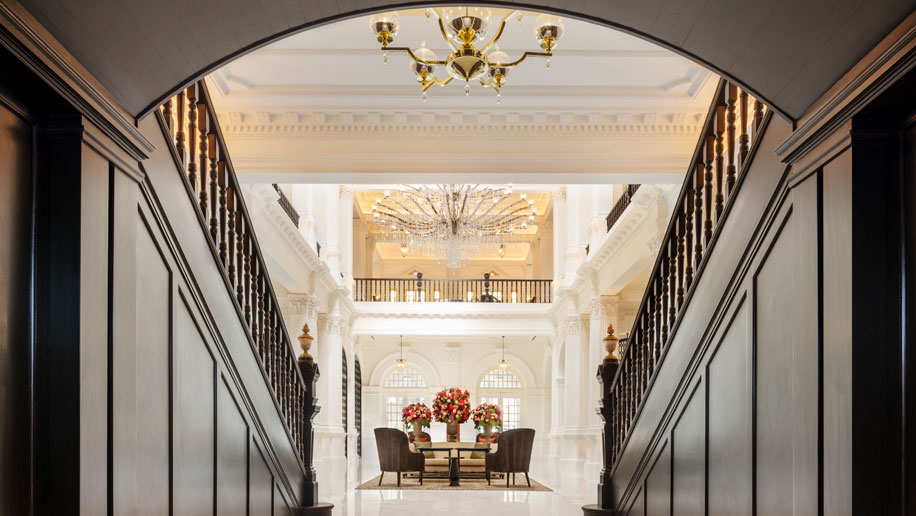
The iconic Raffles Singapore has reopened for guest stays following more than two years of renovation work across its guest rooms and public spaces. The iconic property closed for the project in February 2017.
It was the first Raffles hotel, opened in 1887 as a ten-room bungalow by two brothers from Armenia. Over the twentieth century it became the city-state’s best-known hotel, and in 1987 it was designated a national monument by the government. It was last renovated shortly after.
Today it has a resident historian who has created a series of videos featuring key moments from its past (early guests included the writers Joseph Conrad, Somerset Maugham and Rudyard Kipling).
The new works were led by interior designer Alexandra Champalimaud, architecture and design firm Aedas, lighting consultants Tino Kwan and restoration and research consultants Studio Lapis.
The hotel’s suite count has increased from 103 to 115, while new categories have been added; it now offers State Room Suites, Courtyard Suites, Palm Court Suites, Personality Suites, Residence Suites, Promenade Suites, Grand Hotel Suites and Presidential Suites.
The Raffles Arcade, a collection of shops and “lifestyle spaces”, has a new gift shop, spa and retail brands as well as a history gallery featuring archive pictures and stories.
The restaurant line-up now includes Mediterranean grill BBR by chef Alain Ducasse, steakhouse Butcher’s Block, three-Michelin star chef Anne-Sophie Pic’s La Dame de Pic, Chinese restaurant 兿 yì by Jereme Leung, and classic Indian restaurant Tiffin Room.
In July the hotel reopened its famed Long Bar, a popular tourist spot thanks to its invention of the Singapore Sling, and the Grand Lobby, which has a daily afternoon tea service.


